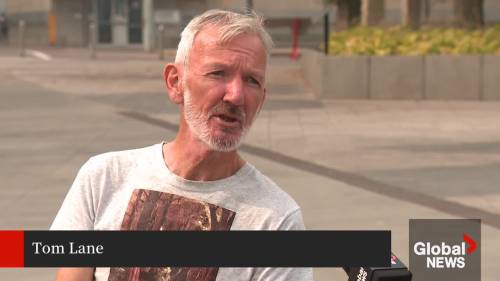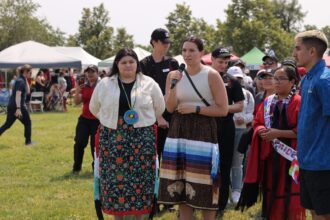The skyline of Alberta’s capital disappeared behind a thick veil of haze Tuesday as wildfire smoke from the Northwest Territories descended upon Edmonton, prompting officials to issue an air quality advisory that left residents facing health concerns and limited outdoor activities.
“What we’re seeing is a perfect storm of meteorological conditions,” explains Dr. Sarah Courchene, environmental health specialist at the University of Alberta. “The combination of northerly winds, atmospheric pressure systems, and the sheer volume of active fires in the N.W.T. has created this significant air quality event.”
The Air Quality Health Index reached 7 out of 10 by midday, placing Edmonton in the “high risk” category—a level at which even healthy individuals are advised to reconsider strenuous outdoor activities. For vulnerable populations, including children, seniors, and those with respiratory conditions, the recommendation is to avoid outdoor exposure entirely.
Firefighting crews in the Northwest Territories continue battling multiple large blazes, with over 120 active wildfires currently burning across the territory. The resulting smoke plume has traveled hundreds of kilometers south, affecting not just Edmonton but communities throughout northern Alberta.
Edmonton resident Maria Gonzalez described the conditions as “apocalyptic” during her morning commute. “You could taste the smoke in the air, and my eyes were stinging by the time I reached my office,” she told CO24 News. “I’ve lived here for fifteen years and can’t remember it being this bad this early in the season.”
Local businesses are feeling the impact as well. Outdoor cafés and patio spaces sat largely empty as Edmontonians opted to remain indoors. The Edmonton Public School Board also issued advisories restricting outdoor recess and physical education classes at schools throughout the district.
Climate scientists point to this event as consistent with broader trends. “What we’re observing aligns with climate modeling that predicts more frequent and intense wildfire seasons,” notes Dr. James Richardson of the Canadian Climate Institute. “The combination of earlier spring thaws, drier conditions, and warmer temperatures creates ideal conditions for these extensive fire events.”
The current forecast offers little immediate relief. Environment Canada meteorologists predict the smoke could linger for at least 48-72 hours, depending on fire activity and potential shifts in wind direction. Emergency departments across the city have reported increases in respiratory-related visits, particularly among asthma sufferers.
Edmonton’s experience echoes similar air quality emergencies that have become increasingly common across Canada in recent years. Last summer, cities from Vancouver to Toronto experienced extended periods of smoke-related air quality advisories, highlighting the growing reach of wildfire impacts.
Municipal officials have activated emergency response protocols, including the opening of designated “clean air shelters” in community centers and libraries for those without access to air conditioning or air filtration. These facilities provide respite particularly for vulnerable homeless populations who cannot escape the outdoor conditions.
As Edmontonians adapt to this early-season air quality emergency, many are questioning whether such events will become the new normal. With climate projections suggesting increasingly volatile fire seasons, are our cities adequately prepared for a future where smoke events become regular seasonal occurrences rather than exceptional emergencies?










